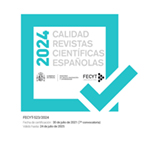"Indians" of Cuba and Cuban ethnologists
Abstract
The natives of Cuba (“Indians”) suffered irreversible losses in population during the Spanish conquest and colonization. Besides, already in the XVIIth century they became “mixed”, as described by the contemporaries. Their major concentration was in several “pueblos de indios”, the last of which El Caney existed till the mid XIXth century. By the end of the XVIIIth century, the central authorities tended to ignore the existence of the few “Indians” although the latter were still considered as such in the areas of their living. The Cuban ethnologists did not perceive their “Indians” although the physical anthropologists from different countries, including the Cuban ones, demonstrated existence of those in several places in the East of the island. The cause of this can be attributed to several factors. The first one is that existence of descendants of the Cuban natives was marginalized by the importance of the Afro-Cuban component of the population in the economy, culture and society. The study of this very group formed the body of the Cuban ethnology, thanks to works of Fernando Ortiz. Another factor was the institutional instability of the ethnology in Cuba. The possible third one, the social quietness of themselves “Indians”, at least until recently.
Downloads
Article download
License
In order to support the global exchange of knowledge, the journal Revista Española de Antropología Americana is allowing unrestricted access to its content as from its publication in this electronic edition, and as such it is an open-access journal. The originals published in this journal are the property of the Complutense University of Madrid and any reproduction thereof in full or in part must cite the source. All content is distributed under a Creative Commons Attribution 4.0 use and distribution licence (CC BY 4.0). This circumstance must be expressly stated in these terms where necessary. You can view the summary and the complete legal text of the licence.









